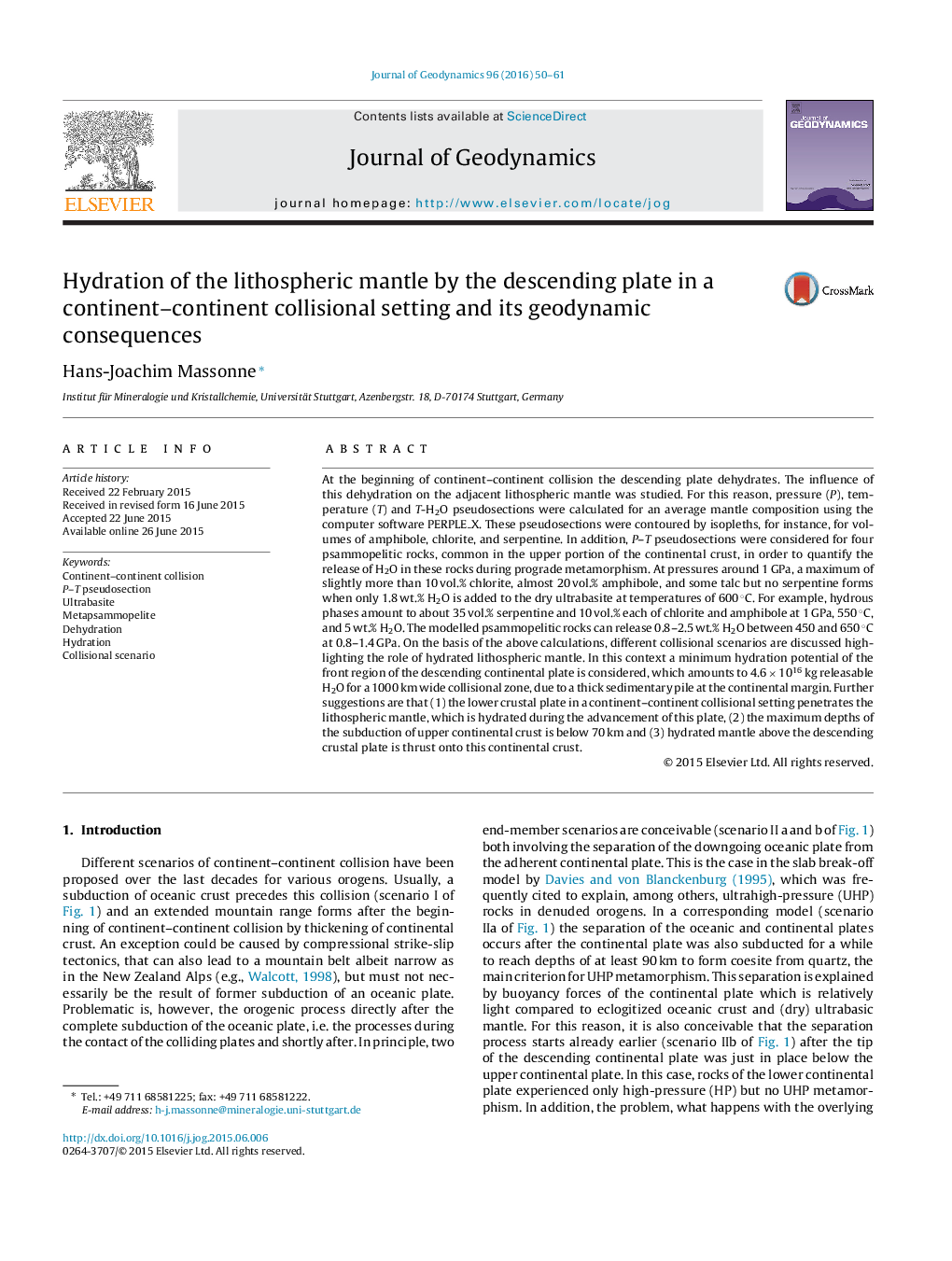| Article ID | Journal | Published Year | Pages | File Type |
|---|---|---|---|---|
| 4687959 | Journal of Geodynamics | 2016 | 12 Pages |
•Dehydration of the descending crust in a collisional setting is quantified.•Hydration of the mantle by the adjacent downgoing crustal plate is also quantified.•Penetration of the lower crustal plate into the mantle during collision is suggested.•This penetration leads to crustal thickening over an extended area during collision.•This penetration also results in hydrated mantle above the lower crustal plate.
At the beginning of continent–continent collision the descending plate dehydrates. The influence of this dehydration on the adjacent lithospheric mantle was studied. For this reason, pressure (P), temperature (T) and T-H2O pseudosections were calculated for an average mantle composition using the computer software PERPLE_X. These pseudosections were contoured by isopleths, for instance, for volumes of amphibole, chlorite, and serpentine. In addition, P–T pseudosections were considered for four psammopelitic rocks, common in the upper portion of the continental crust, in order to quantify the release of H2O in these rocks during prograde metamorphism. At pressures around 1 GPa, a maximum of slightly more than 10 vol.% chlorite, almost 20 vol.% amphibole, and some talc but no serpentine forms when only 1.8 wt.% H2O is added to the dry ultrabasite at temperatures of 600 °C. For example, hydrous phases amount to about 35 vol.% serpentine and 10 vol.% each of chlorite and amphibole at 1 GPa, 550 °C, and 5 wt.% H2O. The modelled psammopelitic rocks can release 0.8–2.5 wt.% H2O between 450 and 650 °C at 0.8–1.4 GPa. On the basis of the above calculations, different collisional scenarios are discussed highlighting the role of hydrated lithospheric mantle. In this context a minimum hydration potential of the front region of the descending continental plate is considered, which amounts to 4.6 × 1016 kg releasable H2O for a 1000 km wide collisional zone, due to a thick sedimentary pile at the continental margin. Further suggestions are that (1) the lower crustal plate in a continent–continent collisional setting penetrates the lithospheric mantle, which is hydrated during the advancement of this plate, (2) the maximum depths of the subduction of upper continental crust is below 70 km and (3) hydrated mantle above the descending crustal plate is thrust onto this continental crust.
